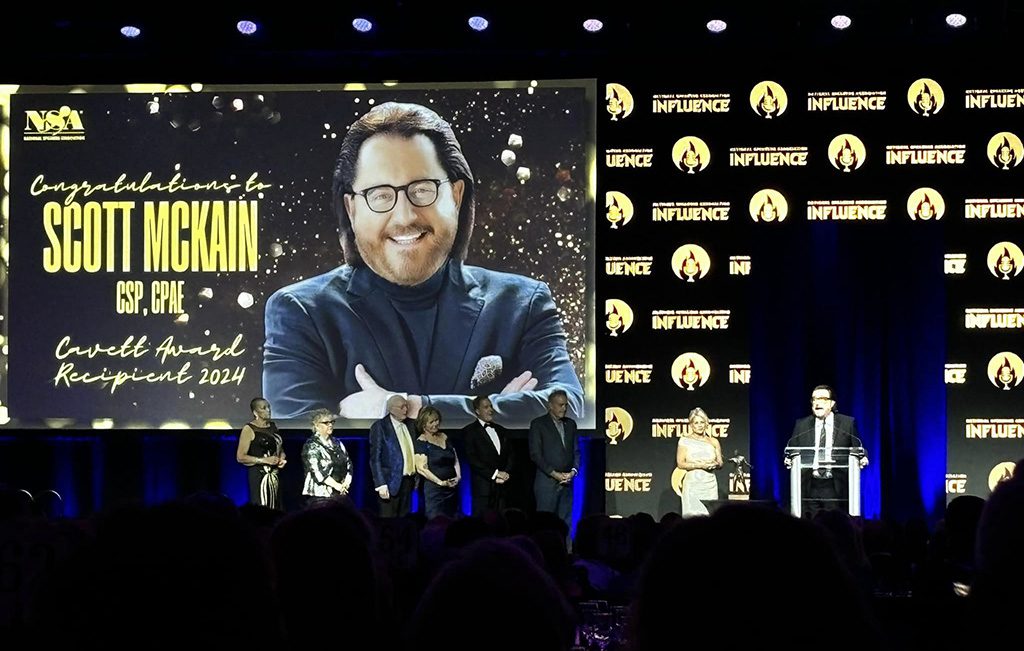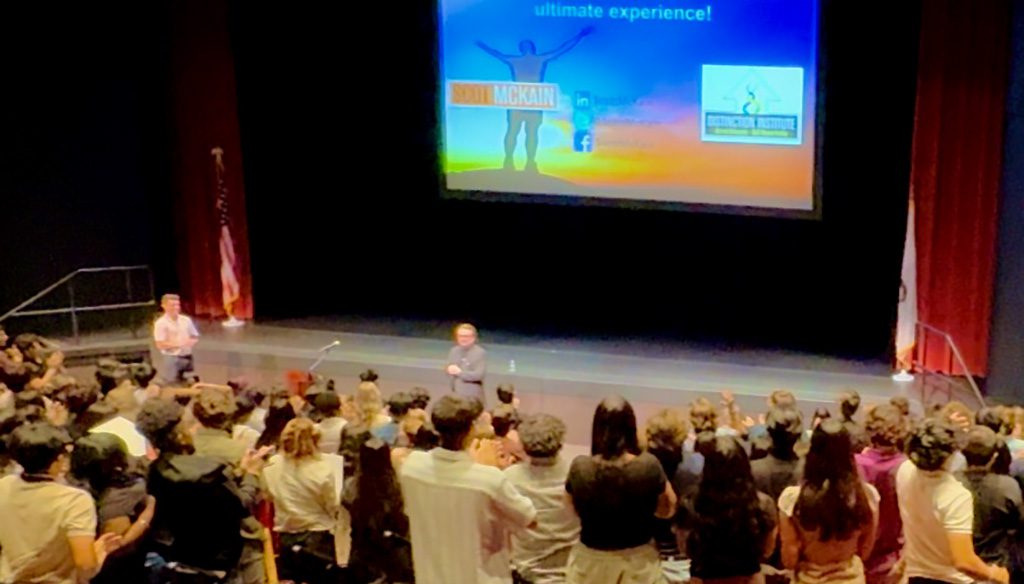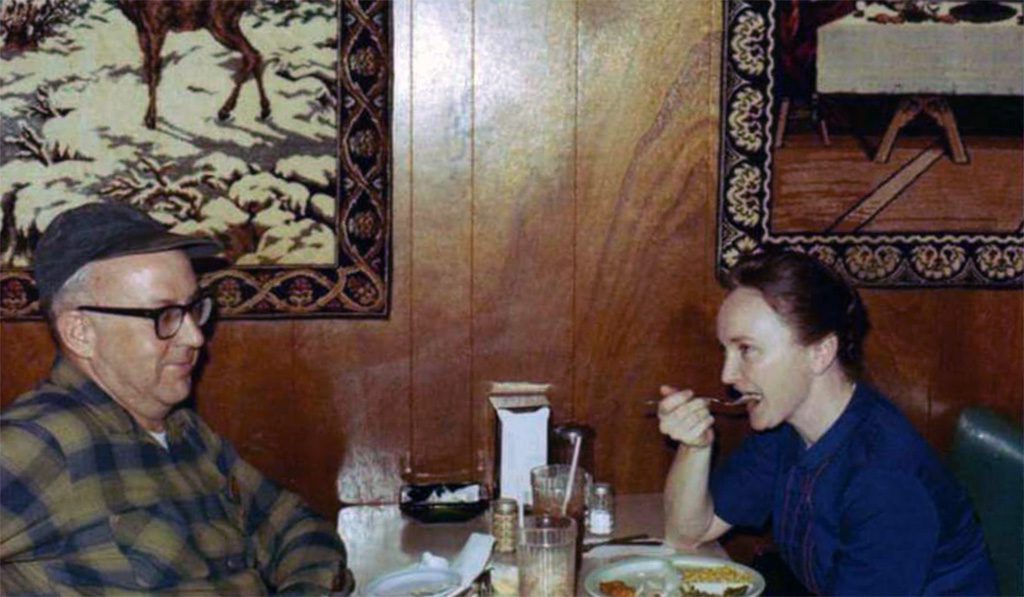
Aug 7, 2024 | ALL Business is STILL Show Business, Business Distinction, Current Event, Customer Experience, Daily Distinction, ICONIC, Leadership, News & Info, Personal Distinction, Sales & Retail
Last night, I had the incredible honor of receiving the Cavett Award from the National Speakers Association, the highest accolade in our profession. It’s a dream for every professional speaker, and I am truly humbled to join the ranks of legends who have inspired and shaped our industry.
The surprise announcement was a moment I’ll never forget, but what has stayed with me most since then is an overwhelming sense of gratitude.
This award is not just a recognition of individual achievement; it is a testament to the incredible relationships I have built with my clients, colleagues, and friends over the years. These relationships have been the cornerstone of my career, and they continue to inspire and drive me every day.
Receiving the Cavett Award also marks a recommitment from me to assist organizations and leaders in creating distinction in their respective markets. It reinforces my dedication to delivering the Ultimate Customer Experience® and helping businesses achieve what I often emphasize: earning “more customers who will spend more money, more often, and provide more referrals.”
To all my clients and friends, thank you for your trust, support, and partnership. This award is as much yours as it is mine. Let’s continue this journey together, striving for excellence and making a difference in every endeavor.
Here’s to creating distinction and delivering extraordinary experiences!
Warm regards,
Scott McKain

Jun 27, 2024 | Business Distinction, Current Event, Customer Experience, Daily Distinction, Leadership, News & Info, Personal Distinction
As I stood before the eager faces at the Youth Citizenship Seminar at Pepperdine University this week, I was struck by a profound sense of continuity and hope. This year marked my 24th anniversary speaking at this event, and each time, I am reminded of the enduring spirit of our younger generations.
The seminar, held between the student’s junior and senior years of high school, serves as an opportunity for molding future leaders. It’s a place where children of billionaires and those who call a van their home converge, not as disparate fragments of society, but as a cohesive unit with a shared purpose. They come with open minds, ready to absorb the wisdom of experiences not their own, and with hearts full of questions about how to carve out a successful path in life.
In a world where social media often amplifies the negative, these students stand as a testament to the good that still thrives in our communities. They are the embodiment of faith in democracy, the belief that despite the challenges we face, improvement and progress are always within reach. Their optimism is not naive; it is a powerful force that drives them to learn, to question, and to strive for a better self and a better country.
This week, as I engaged with these young leaders of the future, I was reminded that distinction is not just about standing out in a crowd. It’s about standing up for what you believe in, and doing so with the conviction that you can make a difference. The diversity of their backgrounds did not divide them; instead, it enriched their discussions, broadening their horizons and deepening their understanding of the world.
The lesson here is clear: no matter our age or station in life, we all have the capacity to grow and improve. The students at this conference at Pepperdine University are a vibrant mosaic of our society, each piece unique yet essential to the whole. They challenge the narrative that youth are disengaged or disillusioned. Instead, they offer a refreshing narrative of unity, curiosity, and a shared desire to contribute positively to the world.
Because of my time with them, I am filled with a renewed sense of purpose. The reminder that there are more good people—good kids—than bad in this world is a beacon of light in the often murky waters of public discourse. It is a call to action for all of us, regardless of age, to find ways to get better at what we do and to inspire others to do the same.
We should all look beyond the headlines and the tweets. These young students are not just the leaders of tomorrow; they are the champions of today, tirelessly working to bridge the gaps that divide us. They remind us that together, as one, we can and will rise to the challenges before us, creating a world that is not only successful but also kind, just, united…and, yes, distinctive.

Jun 7, 2024 | Business Distinction, Customer Experience, Daily Distinction, Sales & Retail
An old-timer in my community made an interesting observation. “Scott,” he said as we reminisced, “it used to be that there were two restaurants here in Crothersville. Not only did the food taste different at Ted’s Restaurant than at Kern’s Grill, but they just felt different. Each was a reflection of the owner’s personality.”
I nodded in agreement. Ted’s was the spot where we always went after a ball game, took a date for a burger and fries, or simply hung out. Kern’s Grill was where the men of the community gathered for breakfast each morning in the late 1960s and 1970s.
During the lunch break at school, I sprinted there to join either Mom or Dad for a quick meal. (But never both at the same time. We owned the grocery store across the street, and one of my parents always had to stay to run our family business.)
For Ted Zollman, his restaurant was his stage, and we customers were his audience. His smile was as bright as his apron. His flashing blue eyes and natural charisma were as much a part of eating there as the cheeseburgers.
On the other hand, Ted’s local competitor, Alvie Kern, would sit in a booth or gruffly stand like a statue behind the counter, often with arms tightly crossed, seldom engaging in the ongoing conversation. He observed while his wife and daughter cared for the tables and customers. Kern’s Grill was a great place to grab a meal and go. Before you could exit the door, the white sack in which they had placed your order would display small and growing circles of grease. (It was a simpler time before we all knew our HDL and LDL numbers.)
Ted’s Restaurant, however, was where you would order a Cherry Coke, sit down, and relax, either because a friend was with you or because you knew that sooner or later, one was bound to come in and stay a while.
My old-timer friend continued, “Anymore, our fast food is the same as the fast food up the road. The McDonald’s in Seymour is the same as the McDonald’s in Scottsburg. They’re all the same from Portland, Oregon, to Portland, Maine. I guess consistency is a good thing, but haven’t we reached the point where we’ve gone overboard?
“The Walmart where we shop is the same as everywhere else . . . and that’s pretty much the same as Target or Meijer. And they all sell the same items anyway. How many places do you really need to be able to go buy your Tide detergent?”
He was on a roll: “My insurance agent sells the same stuff as yours, no matter what companies they work for. One has some screaming duck to represent it, and another has some caveman or lizard. I’m ‘in good hands’ in one place, another is ‘on my side,’ while another is ‘like a good neighbor.’ But the problem is, I can’t tell one from the next. I know the difference on my street between one of my neighbors and another. So how do I know why one company is a better neighbor or ‘on my side’ more than the other?”
These are great questions.
Can your customers tell the difference between you and your competition?
No matter your professional responsibilities—as CEO of a Fortune 500 company to a small business entrepreneur, someone at the home office sprinting up the corporate ladder, or a salesperson slogging it out in the trenches—this question should keep you tossing and turning at night: how can your customers distinguish you from your competition?
You should be asking this for one simple reason: The primary problem of your business is that you need more customers who will spend more with you and refer you to their colleagues and friends.
The criterion this senior citizen used to make his determination should terrify you. It should frighten all who are trying to grow our businesses and careers.
“It’s just price, I guess!” he deduced. “I sure don’t notice any difference between them with service. And I don’t know enough about insurance, for example, to really understand the differences between their products. These days, every tree in the forest seems to be exactly alike. It’s not just bland,” he said. “It’s all become the same!”
Every business, whether a global corporation or a small-town shop, grapples with this one fundamental problem: the need for more and better customers.
The solution lies in being chosen more frequently by your target audience. But how do you achieve this?
In today’s world, where products and services increasingly look alike, the secret to being chosen more often is creating distinction.
It’s not enough to be great; you must stand out. It is valid for any industry, from financial services to retail technology firms to local diners. When everything looks the same to customers, they make their choices based on price alone, and that’s a race to the bottom that no business can afford to win.
The path to attracting more and better customers begins with creating distinction. Your business deserves to be noticed and valued for what makes it unique. It’s time to step out of the sea of sameness and into a world where your business shines brightly.
Welcome to the journey of creating distinction.
Remember:
- No customer is loyal to a generic.
- We are chosen for our differences, not our similarities.
- The only points of differentiation that matter are the ones that are valuable to customers and prospects.
- Just being different is NOT better. But, being distinctive in a compelling way that attracts target customers and prospects is the key to disruptive success.
How can we help you achieve this? We have a myriad of services we provide to great organizations: keynote speeches, training programs, consulting, executive coaching, train-the-trainer packages, seminars/workshops, and more. The main thing is:
LET’S GET STARTED!
Call us at 800-838-6980 or visit https://ScottMcKain.com

May 31, 2024 | Business Distinction, Current Event, Customer Experience, ICONIC, Leadership, News & Info, Personal Distinction, Sales & Retail
Currently, I am working on a new keynote speech and project that I’m calling “The Customer Algorithm.”
The idea came to me as I was driving a rental car from Tucson to Phoenix. Construction on the Interstate had traffic at a standstill, and I was likely going to miss my flight. This raised the possibility that it might be more productive for me to simply travel to my next speech rather than return home for a day before hitting the road again.
When I called the airline, the AI voice recognized my name and frequent flyer status. It was friendly and made me feel that it wanted to help. However, while it could’ve helped me pick a later flight to the same airport, it was not prepared to help change my destination. I found myself alone in my Hertz rental, repeatedly shouting, “REPRESENTATIVE!”
You know that organizations are increasingly turning to AI to support their customer experience strategies. While AI offers numerous benefits, it is crucial not to overlook the importance of the human element in delivering the Ultimate Customer Experience®. Emotional intelligence is the key to building trust and loyalty — essential components of any successful CX strategy.
As my recent travel experience suggests, human agents are better suited to handle unique or unexpected situations that fall outside the scope of AI’s programmed responses. People on your team should be able to think creatively, draw from their experiences, and offer personalized solutions. This flexibility is particularly valuable in industries where customer needs and preferences can vary widely, such as retail, healthcare, and hospitality.
However, this does not mean that your organization should shy away from implementing AI in your CX strategies. AI can be a powerful tool for handling routine inquiries, providing quick access to information, and streamlining processes. The key is to find the right balance between AI and human interaction, leveraging the strengths of each to create a seamless and efficient customer experience.
The obvious question is, how do you achieve this balance?
Organizations must invest in training their human agents to work effectively alongside AI. This includes teaching your AI how to hand off conversations smoothly and when to escalate issues to a human agent. Your team must be trained on how to leverage AI-generated insights to provide better service. Additionally, organizations should prioritize transparency, letting customers know when they are interacting with an AI and offering the option to speak with a human agent if needed – without requiring them to shout “REPRESENTATIVE” repeatedly to get to one!
Another important consideration is the continuous improvement of AI systems based on customer feedback and interactions. By analyzing data from both AI and human interactions, you can identify areas for improvement and fine-tune your AI algorithms to better meet customer needs.
AI is a valuable addition to any CX strategy, but it is not a replacement for the human element.
The Ultimate Customer Experience® requires a balanced approach that leverages the efficiency of AI and the emotional intelligence of your team members. By investing in the right mix of technology and human talent, organizations can create a customer experience that drives customer retention and referrals, which means profitability for your organization.

May 14, 2024 | Business Distinction, Daily Distinction, Personal Distinction
If you’ve followed my work for any period, you know that my research and focus is on creating distinction. It’s usually assumed that I’m targeting organizations and how they can generate a marketplace advantage. However, creating distinction is essential for individual professionals seeking to stand out in an increasingly competitive and crowded marketplace.
Here’s a brief exploration of why — then how — professionals can achieve this based on the Four Cornerstones of Distinction from my books, “Create Distinction” and “ICONIC.”
Why Personal and Professional Distinction is of Critical Importance:
Standing Out in a Crowded Market
Today’s professionals are constantly vying for attention amidst a sea of competitors. Creating distinction helps you differentiate yourself, making it easier for potential clients, employers, and partners to recognize and remember you. This differentiation is not just about being different; it’s about being perceived as uniquely valuable.
Building a Personal Brand
Your personal brand is the unique combination of skills, experiences, and personality that you present to the world. Creating distinction involves honing and consistently presenting your personal brand. A strong personal brand can lead to more significant opportunities, higher credibility, and a loyal following.
Enhancing Professional Opportunities
I’ve often said that when you stand out, you earn more. This is because you are more likely to attract the attention of potential clients, employers, and collaborators. Distinctive professionals often find themselves with more opportunities to participate in high-profile projects.
Driving Personal and Professional Growth
A line that has been used for many years in our National Speakers Association is that “School is never out for the pro.” Creating distinction encourages continuous self-improvement and learning. By striving to be unique and excellent in your field, you push yourself to acquire new skills, knowledge, and experiences that contribute to your overall growth. Let’s face it: the world is changing more rapidly than ever before. Your key to relevance is ongoing growth – both personally and professionally.
Fostering Trust and Loyalty
When you distinguish yourself, you create a unique identity that people can connect with. This connection fosters trust and loyalty, as people are more likely to engage with and support someone they perceive as authentic and exceptional.
The Four Cornerstones of Creating Personal and Professional Distinction
Cornerstone 1: Clarity
Clarity is about understanding and defining what makes you unique. It’s essential to articulate your unique value proposition clearly. A LinkedIn survey found that professionals who can clearly define their unique skills and strengths are 20% more likely to be viewed as leaders in their field. To achieve clarity, reflect on your skills, experiences, and passions. What can you offer that others cannot? Make sure this is communicated consistently and specifically across all your professional interactions.
Cornerstone 2: Creativity
Creativity involves thinking outside the box and bringing fresh, original ideas to the table. In a study by Adobe, 78% of respondents said that creativity is essential to economic growth. Creative professionals are often seen as more adaptable and innovative, making them more attractive to potential employers and clients. Engage in activities that stimulate your creativity, such as brainstorming sessions, attending creative workshops, or collaborating with diverse groups of people. It doesn’t have to be chaotic or undisciplined. Sometimes, it’s just a small tweak that can achieve large results.
Cornerstone 3: Communication
Effective communication is crucial in conveying your unique value to your audience. According to a report by the Harvard Business Review, professionals who communicate effectively are 50% more likely to have stronger personal and professional relationships. Ensure that your communication is clear, concise, and aligned with your personal brand. The key here is the importance of narrative. Stories are remembered when figures and facts are forgotten. Study how to craft and deliver compelling stories.
(For help with this, check out my online course titled “Distinctive Story.” It will teach you how it’s done! https://DistinctiveStory.com)
Cornerstone 4: Customer Experience Focus
Focusing on delivering exceptional customer experiences can set you apart from your peers. Research by PwC shows that 73% of customers say that a good experience is key in influencing their brand loyalties. For individual professionals, this means going above and beyond in every interaction, whether with clients, colleagues, or partners. By consistently providing exceptional service and value, you build a reputation that distinguishes you from others in your field.
In a world where competition is fierce, creating distinction is not a luxury but a necessity for individual professionals. By focusing on the Four Cornerstones of Distinction—Clarity, Creativity, Communication, and Customer Experience Focus—you can effectively stand out and achieve greater success in your professional journey. Distinction not only sets you apart but also paves the way for a more fulfilling and impactful career.
Remember, creating distinction is an ongoing process that requires dedication, creativity, and a relentless focus on delivering value.

May 6, 2024 | Business Distinction, Customer Experience, Personal Distinction
You know that in today’s business landscape is more competitive than ever. This means that providing an exceptional level of customer experience is more crucial than ever, too!
While the specific needs and expectations of customers may vary depending on your industry and context, here are six key elements that should be present in every customer interaction to create what – for over three decades — I have called an Ultimate Customer Experience.®
1. Empathy and Understanding
One of the most fundamental aspects of superior customer service is the ability of the business to demonstrate genuine empathy and understanding towards its customers. This means actively listening to their needs, concerns, and preferences and adapting the service accordingly.
Whether a hotel front desk clerk greets a guest with a warm smile or a funeral director offers a compassionate and respectful presence, the ability to connect with customers on an emotional level is essential.
However, taking it to the Ultimate Customer Experience® means that you take it to a higher level.
Good service is the desk clerk smiling when you approach. UCX is when you ask the guest to tell you about their day and express empathy for a late flight or long day.
2. Personalization and Customization
Customers appreciate when their experience feels tailored to their individual needs and preferences. This can be achieved through personalization and customization. By leveraging customer data, businesses can provide targeted recommendations, personalized communications, and customized solutions.
For example, a hotel may offer room preferences based on a guest’s previous stays, while a funeral home may provide customized memorial services that reflect the deceased’s unique life and personality.
I was just interviewed by Bosch & Lomb for a publication they provide to optometrists around the world. I told them that the difference is between making me feel like it’s the twentieth vision exam you’ve done that day – or that you convince me that you are focused on a thorough checkup of MY eyes.
3. Convenience and Ease of Use
In our fast-paced world, customers value convenience and ease of use. Businesses should strive to simplify processes, minimize friction points, and provide seamless experiences across various touchpoints. This can include intuitive online booking systems, mobile apps for easy access to information and services, and streamlined check-in and check-out procedures.
By removing barriers and making interactions effortless, businesses can enhance the overall customer experience.
Do a thorough checkup of where friction is created in your customer’s experience.
4. Responsiveness and Reliability
Customers expect prompt and reliable service. When they have a question, concern, or request, they want to know that their needs will be addressed in a timely manner. This requires businesses to have efficient communication channels, well-trained staff, and robust systems in place to handle customer inquiries and issues.
Whether it’s a quick response to an email, a 24/7 customer support hotline, or a proactive approach to problem-solving, responsiveness and reliability are key to building trust and loyalty.
I called a business the other day that stated on its inbound message service, “We respond to your calls within four business days.” What!?! No customer wants to wait that long for a response. I’ll find someplace else to take my business.
5. Attention to Detail
Small details can make a big difference in the customer experience. Businesses should pay close attention to every aspect of the customer journey, from the initial point of contact to the post-purchase follow-up.
This can include thoughtful touches like personalized greetings, well-maintained facilities, carefully curated product displays, and even small gestures of appreciation. By going above and beyond in the details, businesses can create memorable experiences that leave a lasting positive impression on customers.
6. Continuous Improvement
Creating an Ultimate Customer Experience® is an ongoing process that requires continuous improvement. Businesses should actively seek customer feedback, monitor industry trends, and embrace innovation to stay ahead of the curve.
As I previously mentioned, the specific elements of a great customer experience may vary depending on the industry and context. However, we’ve reviewed six key components that should be present in every customer interaction.
By prioritizing empathy, personalization, convenience, responsiveness, attention to detail, and continuous improvement, your organization can create an Ultimate Customer Experience® that sets you apart from the competition and fosters long-lasting customer relationships.






